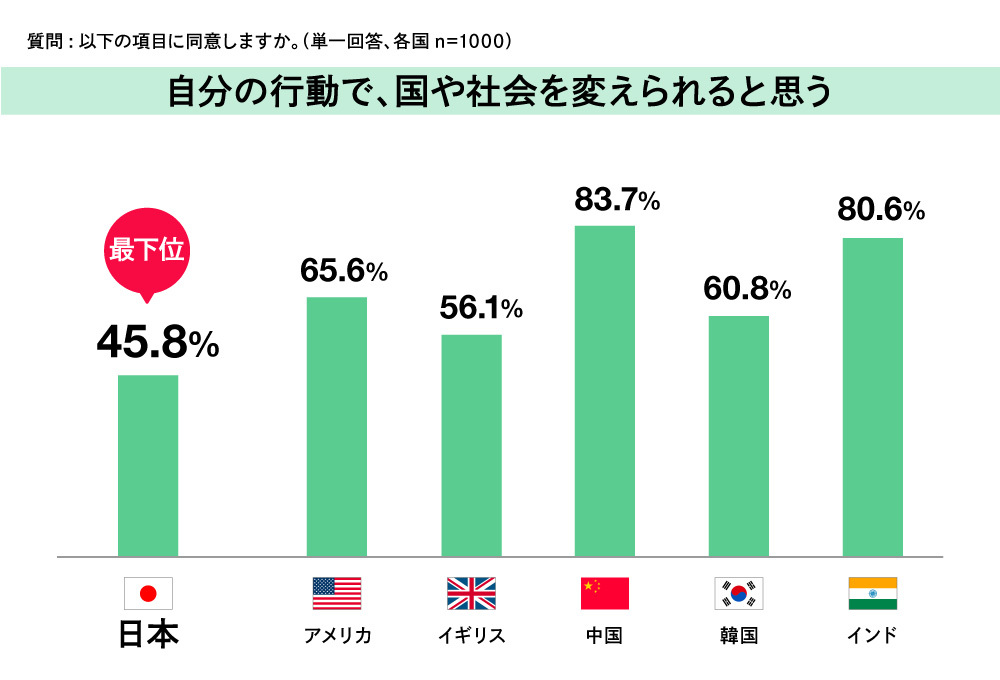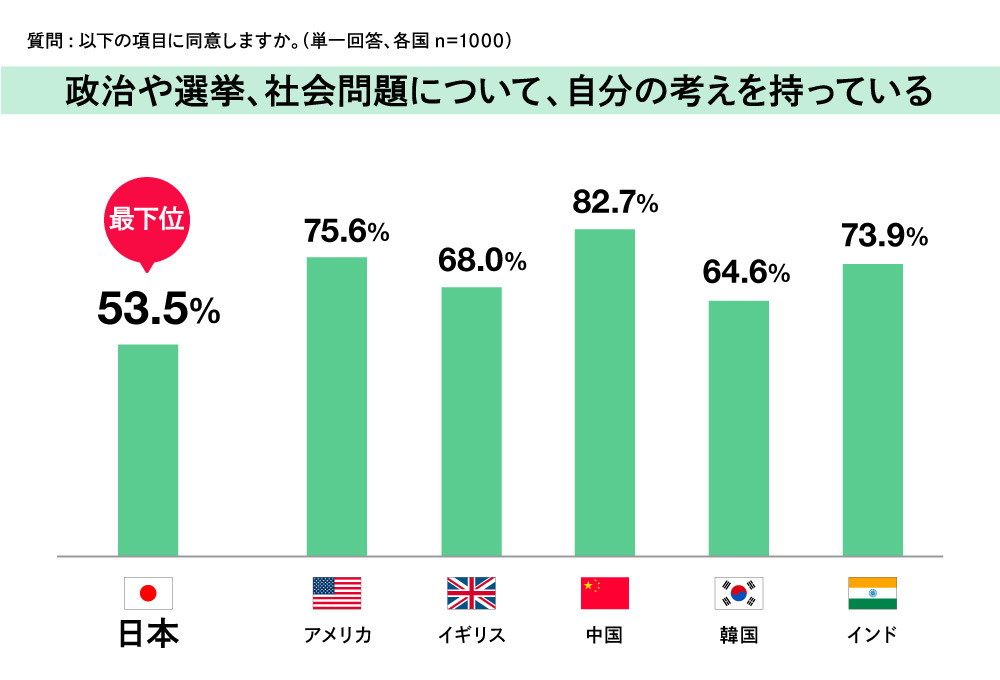Note: This website was automatically translated, so some terms or nuances may not be completely accurate.
PR and Social Innovation. In an era where "co-creation" is transforming society.

The concept of Public Relations (PR) is evolving, and its boundaries are becoming increasingly blurred. PR professionals within organizations like corporations are likely finding themselves more often uncertain about where PR's domain ends.
Throughout this series, we have examined the "essence of PR" from multifaceted perspectives: PR and "Japan," "journalism," "media," "marketing," and "public policy." The theme for this final installment is "social innovation."
At PR Consulting Dentsu Inc., we define this term as
creating new social values and systems that bring about paradigm shifts to build a sustainable, better society
( Link )
PR and social innovation are closely intertwined. In this article, Ikuyo Nakagawa, of PR Consulting Dentsu Inc., explores the history of social innovation while providing insights.
<Table of Contents>
▼"Do you think you can change your country or society?" - Japan ranks last again in 18-year-old awareness survey
▼Japan's SDGs awareness exceeds 90%. What's needed is a catalyst for "action"
▼Society won't change without changing people's minds. Driving forces of awareness and behavioral change seen in China and India
▼What is Social Innovation? The impact the "postage stamp system" brought to society
▼Even 180-year-old social innovation started with a PR perspective
▼"Collective Impact": Tackling social issues across organizational boundaries
▼PR exists to help individuals and companies solve problems by connecting
"Do you think you can change your country or society?" — Japan ranks last again in 18-year-old awareness survey
"Do you think your actions can change the country or society?"
Less than half of Japan's young generation answered affirmatively, at 45.8%.
This finding emerged from the "18-Year-Old Awareness Survey—62nd Edition: Attitudes Toward the Nation and Society (6-Country Survey)" published by The Nippon Foundation in April 2024.
https://www.nippon-foundation.or.jp/who/news/pr/2024/20240403-100595.html
Although this represents an increase from the 26.9% recorded in the previous survey conducted in 2022, Japan still lags significantly behind other countries (the United States, the United Kingdom, China, South Korea, and India). Since the inaugural survey in 2019, Japan has ranked last in this survey for three consecutive times.

For reference, China ranked first at 83.7%, India second at 80.6%, the US third at 65.6%, South Korea fourth at 60.8%, and even the UK, in fifth place, recorded 56.1%. In other countries, more than half of young people view their actions positively.
Does this mean Japanese youth are more realistic compared to their peers abroad?
While it's understandable that individuals feel limited by their own actions, Japan also ranks last among the six countries in other categories: the desire to "contribute to the country or society," the level of interest in "having personal opinions on politics, elections, and social issues," and the level of interest in "actively gathering information on politics, elections, and social issues."
Japan has over 90% awareness of the SDGs. What's needed is a catalyst for "action."
Meanwhile, awareness of the SDGs, which aim to solve social issues, now exceeds 90% in Japan.
According to a July 2023 survey by the Corporate Public Relations Strategy Institute targeting 10,000 general consumers nationwide , SDG awareness stands at 93.4% (Figure 1).
Following their incorporation into elementary and junior high school curricula, the SDGs were also introduced into high school classes starting in the 2022 academic year. This suggests that awareness among younger generations is driving overall awareness upward.

<Survey Overview>
Survey Participants: 10,000 men and women aged 20-69 nationwide ※Individuals who feel attracted to at least one of 20 industries (200 companies) (500 people per industry).
Survey Method: Online survey
Period: July 14–24, 2023
Given that SDGs are so widely understood in Japan, particularly among younger generations, how should we interpret the fact that Japan ranked lowest in the aforementioned 18-year-old awareness survey?
While they seem to have sufficient knowledge about the issues and what actions are needed, it appears they lack the trigger to make it personally relevant, preventing them from taking actual action.
If that's the case, someone needs to create opportunities to give them that push. The crucial question is when, how, through what mechanisms, and who will provide that push to move them forward.
Society cannot change without changing people's mindsets. The driving forces behind mindset and behavioral change seen in China and India
In the prologue to this series, Kaoru Nemoto, Director of the United Nations Information Centre, and Osamu Iguchi, Executive Officer at PR Consulting Dentsu Inc., discussed the role PR should play in achieving the SDGs, focusing on the theme "The Future of PR."
The Path to SDG Achievement Led by PR: What is the Role of PR that Contributes to the Future?
https://dentsu-ho.com/articles/8461
As discussed in this dialogue, " social innovation " is indispensable for solving various challenges such as super-aging societies, climate change, COVID-19, conflicts, and global divisions.
Society cannot change without shifting people's awareness and actions. For example, what is driving the awareness and behavioral change in China and India, which rank highly in the survey results?
First, in this survey, China ranks top in various categories. This background includes the fact that the international community was still in the midst of the COVID-19 pandemic during the previous survey, followed by the emergence of the so-called "White Paper Movement" led by Chinese youth, and subsequently the abolition of the zero-COVID policy.
As a result of the easing of strict domestic restrictions, it is speculated that young people feel they can influence their country and society, leading to heightened interest in and active engagement with political and social issues.
Then there's India. While it narrowly placed second in this survey, it had secured first place by a wide margin in the previous two surveys. It seems to me that the positive mindset of its youth is directly translating into the nation's momentum.
India, which has achieved innovative economic growth in the IT sector, surpassed China in population to become the world's most populous country in 2023. In contrast to Japan, its increasingly abundant labor force will likely become a key strength going forward.
On the other hand, India, a nation facing serious social challenges like severe air pollution, poverty, and discrimination, is also at the forefront globally in addressing these issues.
Within India, "impact investing" (※1) is expanding year by year. Investment amounts grew from $300 million in 2010 to $2.7 billion in 2019, representing an average annual growth rate of 26% (Source: The Global Steering Group for Impact Investment).
*1 Impact investing = Investment aimed not only at financial returns but also at creating social and environmental impact
Furthermore, in 2014, Indian child rights activist Kailash Satyarthi shared the Nobel Peace Prize with Malala Yousafzai, a Pakistani activist who continues to advocate for women's right to education. This achievement is a source of national pride, and we believe Satyarthi's presence lies at the core of the consciousness driving people striving to realize a better society.
What is Social Innovation? The Impact of the "Stamp System" on Society
While definitions of social innovation vary (※2), this article defines it as
creating new social values and mechanisms that bring about paradigm shifts to build a sustainable, better society
.
※2 Definition of Social Innovation =
-
"Innovative activities or ventures primarily developed and disseminated by organizations motivated by meeting societal needs and prioritizing social objectives" (University of Oxford, UK)
-
"A process of developing and deploying effective solutions to difficult and often societal or environmental challenges in support of societal development" (Stanford University, USA)
-
"While the definition of changing society for the better is common, the field is too broad to define precisely" (Mitsui & Co. Strategic Research Institute)
etc.
Achieving a better society requires daily "improvements," but improvement implies only incremental change. Innovation is a new, revolutionary model distinct from mere improvement or updates.
Furthermore, social innovation should be considered separately from mere technological innovation or business innovation, though distinguishing between these types of innovation can sometimes be difficult.
Whether technological or business-related, if an innovation brings about "social good," it can be considered social innovation. Furthermore, these should not be mere ideas but should be widely adopted, operationalized, and sustainable.
The most straightforward example of social innovation that brought about a major shift toward a better society dates back to the 19th century: the introduction of the postage stamp system.
With the spread of the internet, the act of affixing stamps to send letters or postcards has drastically declined today. However, in the 19th century, the "postage stamp" – enabling prepaid postage – was a truly groundbreaking innovation.
The world's first postage stamp was issued in Britain in 1840. At that time, letters operated on a system where the recipient paid the postage based on weight and distance, not the sender. Consequently, many people refused to accept mail, complaining that the collect postage was too expensive or that they didn't want unsolicited letters.
It was Roland Hill, a tax researcher later called the "Father of Modern Postage," who sought to reform this inconvenient and flawed postal system to make it accessible to the entire population.
Roland Hill's Modern Postal System (Postal Museum)
https://www.postalmuseum.jp/column/collection/first-stamp.html
Hill first created a pamphlet outlining his postal reform proposals and made it publicly available. The pamphlet proposed a rationalized and simplified system: a prepaid postage system where the sender pays the fee, combined with a uniform, low rate for delivery anywhere in the country.

This reform proposal gained public support, and Parliament decided to implement the new postal system starting in 1840. Hill then offered a prize for the best method to indicate that postage had been prepaid.
The winning entry proposed "affixing a token to the surface of the mail," and thus the world's first "postage stamp" was born: .
A social innovation from 180 years ago also started with a PR perspective
It's unclear whether Hill had the concept of PR in mind at the time, but this story of the stamp's creation incorporates several PR perspectives.
He published pamphlets outlining his reform proposals to gain public support.
He then shared the public's voice in Parliament, leading to the resolution to implement the reform plan.
Subsequently, he held a contest to determine how the prepaid mark should be displayed, once again drawing public attention.
The father of modern postal services was a true PR practitioner, setting clear goals and shaping public opinion to achieve them.
The "postage stamp," born from this PR mindset, brought about a major social innovation. The reform proposal was realized in just three years after the pamphlet's release. Three years after Britain first issued stamps, Switzerland also adopted the stamp system. It then spread rapidly across the world. The United States issued its first stamps in 1847, France in 1849, and Japan in 1871.
The creation of the stamp system—a "new social value and mechanism"—compared to the traditional postal system stands as a prime example of social innovation. Through PR, it widely raised societal awareness and significantly transformed society for the better.
While this case may appear to be a business innovation, it can be defined as a "social innovation" based on the following four elements:
- It brought about a revolutionary perception change, making prepaid postage the norm instead of postage due.
- It benefited society as a whole, not just a single organization or region.
- It spread and permeated widely across the world, not remaining confined to specific organizations or regions.
- It became established not merely as an innovative idea, but as a sustainable social system.
What kind of innovation is urgently needed now, beyond "convenient and comfortable" living?
However, in recent years, such social innovation may no longer be expected in developed nations. This is because people's lives have become more affluent, and convenient, comfortable living is already taken for granted.
Rather, what is now urgently needed is how to achieve climate change countermeasures and greenhouse gas reduction on a global scale, even if it means accepting some inconvenience compared to our previous convenient and comfortable lives.
Simultaneously, we must accelerate the transition to a better society where everyone can live with peace of mind, addressing issues like eliminating inequality between people and nations. Achieving these goals is the purpose of the SDGs, and proactive efforts are expected not only from governments but also from businesses.

Expectations for businesses are reflected in the results of the "Trust Barometer" survey by U.S. PR firm Edelman, released at the World Economic Forum Annual Meeting (Davos Conference) in January 2024.
The survey, conducted from November 3 to 22, 2023, across 28 countries, measured trust in national governments, businesses, media, and NGOs. Globally, it revealed that trust in "businesses" is higher than in NGOs or governments. This trend continues from the previous year's survey.
In an era of distrust and instability, corporations are the most trusted organizations, suggesting that expectations for them to solve societal challenges are growing even stronger.
We have previously covered these societal expectations of corporations in earlier articles of this series.
PR and Public Policy: The Potential of "Public Affairs" and "Brand Activism"
https://dentsu-ho.com/articles/8753
Collective Impact: Tackling Social Issues Beyond Organizational Boundaries
However, no matter how brilliant a business model a company creates, it cannot solve all social issues alone. Furthermore, in today's world where social issues are diversifying and becoming more complex, it is also increasingly difficult for administrative bodies like national and local governments to address them alone.
Against this backdrop, implementing "Collective Impact" to solve social issues has become increasingly important in recent years.
Collective Impact is an approach where government, businesses, NPOs, citizens, and others collaborate across organizational boundaries to tackle specific social issues.
It involves setting clear goals and aiming to realize a better society by leveraging each organization's expertise or complementing each other's strengths. Building relationships with diverse stakeholders is precisely where PR excels, and it is here that PR is most needed.
Let me introduce a familiar example of social innovation that put collective impact into practice: Sekisui House's " IKUKYU.PJT."
This initiative by a single company extended beyond its walls, playing a role in the social innovation of promoting paternity leave uptake among men in Japan. It is an effort that has won numerous industry awards.
As a housing manufacturer, Sekisui House believed that for its global vision—"Making 'Our Home' the Happiest Place in the World"—to be realized, it was crucial for each employee to be happy. Therefore, starting in September 2018, it promoted the "full utilization of at least one month of childcare leave by male employees with children under three years old."
By February 2019, when the policy was fully implemented, all eligible male employees achieved a 100% uptake rate for at least one month of childcare leave. (This 100% uptake rate has been maintained as of the end of February 2024.)
Meanwhile, Japan's male paternity leave uptake rate at that time was 7.48% (according to the Ministry of Health, Labour and Welfare's "2019 Basic Survey on Equal Employment Opportunities"), showing a slight increase from the previous year but still below 10%.
Driven by the desire to make male paternity leave a catalyst for building a better society, Sekisui House began external communications in 2019. It continuously conducted various awareness-raising activities, including publicly releasing its unique "Family Meeting Sheet," establishing "Paternity Leave Awareness Day," and publishing the Male Paternity Leave White Paper, which surveyed the actual state of male paternity leave nationwide.
In 2022, when the revised Childcare and Family Care Leave Act took effect, the initiative expanded beyond the company to engage businesses and organizations across industries and sectors, evolving into the "Thinking About Men Taking Paternity Leave" co-creation project. Through videos, social media, forums, and advertisements, it disseminated positive messages about promoting men taking paternity leave to Japanese society as a whole, fostering a momentum for society to proactively engage in advancing this cause.
This project garnered support from 81 companies and organizations, including government ministries, local governments, embassies, and media outlets, becoming a catalyst for social change. The following year, 2023, the initiative expanded further, gathering support from 119 companies and organizations that shared the vision of "creating a society where men taking childcare leave is the norm," and disseminated its message to society at large.
According to a survey released by the Ministry of Health, Labour and Welfare in July 2023, the male childcare leave uptake rate reached 17.13%, a 3.16-point increase from the previous year and the highest on record. While there is still a significant gap to the government's 2025 target of "50%," society is undoubtedly shifting towards a norm where men taking childcare leave is commonplace.

IKUKYU.PJT (Promoting Paternity Leave and Childcare Leave for Men) | Sekisui House ( sekisuihouse.co.jp )
https://www.sekisuihouse.co.jp/ikukyu/movie/
PR exists to help individuals and companies connect and solve problems together.
Earlier, Japan's younger generation ranked lowest in responses to "Do you believe your actions can change the country or society?"
How does this translate to companies? How many companies would actually answer YES to "I believe our company's actions can change the country and society"?
While societal expectations of companies are rising, in an era where social challenges are diversifying and becoming more complex, neither the younger generation nor companies need to shoulder these burdens alone.
To put it bluntly, that's precisely why PR exists. By approaching social issues from a PR perspective, connecting with others, and practicing collective impact, the realization of social innovation will accelerate.
Collective impact, as a scheme where each entity leverages its strengths to fulfill functional roles in addressing a social issue, has seen numerous successful cases in Europe and the US. In Japan too, NGOs/NPOs and corporate consortia leading and facilitating such initiatives have emerged.
Conversely, a growing number of initiatives are led by individuals, with organizations like corporations providing support. Among these, many passionate individuals with strong convictions are leaving organizations to become active as independent professionals. Numerous examples exist of such individuals, driven by strong convictions and possessing exceptional skills, striving to change society.
If we can harness the power of these scattered individuals, it could become a significant driving force. Whether individuals or companies, if they share the same goal, the stance of "let's work together first" – essentially "building a community" – is now being recognized as crucial communication. Even loose connections can foster co-creation, and the more diverse these connections, the more new discoveries emerge, leading to innovation.
The world is already changing. Toward a society where men taking paternity leave is the norm. Toward a society where we no longer need to label women as "female managers" or "female legislators." The day will come when same-sex marriage is no longer even a topic of discussion.
At this juncture, the practice of "active listening" – humbly and persistently hearing diverse stakeholders – is being reevaluated.
As covered in this series, PR requires two-way communication. Building trust demands not just "public relations" but also the concept of "public listening." And now, we need to take that "public listening" a step further to adopt an attitude of "active listening."
PR and Japan. What is the root cause of "PR, a frequently misunderstood issue"?
https://dentsu-ho.com/articles/8554
Broad listening literally means "hearing the voices of many people," while attentive listening means "deeply understanding one person's story." To achieve deep-level communication with diverse stakeholders, demonstrating respect and understanding for the other party is crucial.
Companies, governments, and municipalities now face a critical juncture: whether they can confront minority voices head-on, provide broad awareness to people, and transform society for the better.
In this context, just as social innovation 180 years ago began with a PR perspective, social innovation cannot be realized without listening to societal needs and engaging many people—that is, without public relations.
Moreover, social innovation is driving a shift in consciousness within each of us. As individuals become aware and take action, society as a whole evolves into a more equitable and accepting place.
The power of PR is indispensable for accelerating this change, and its importance will only continue to grow.

Was this article helpful?
Newsletter registration is here
We select and publish important news every day
For inquiries about this article
Back Numbers
Author

Nakagawa Ikuyo
PR Consulting Dentsu Inc.
Integrated Communications Bureau
Chief Consultant
Long experience in planning, organizing, and executing PR events for government agencies and corporations. After returning from childcare leave, worked in the management department to promote operational efficiency, including employee work practices and knowledge sharing. Also involved in developing the company's corporate philosophy. Currently supports internal and external branding while planning and executing internal initiatives. Co-authored books include "Welcome to the Corporate Museum" (Jiji Press) and "Proposals for PR 4.0" (Sendenkaigi). Certified PR Planner by the Japan Public Relations Association.







